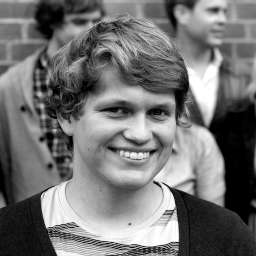The Studio for New Music is a Russian contemporary music ensemble, and is the ensemble-in-residence of the Moscow Conservatory. At this concert at the Oslo Opera House, their first in Norway, they presented a programme of Russian music, ranging from Stravinsky’s 1914 song cycle Pribaoutki to Vladimir Tarnopolski’s 2001 piece Chevengur for soprano and chamber ensemble.
They started, however, with Edison Denisov’s Chamber Symphony no. 2. It was completed two years before the composer’s death in 1996. Indeed, it was during the rehearsal period for this piece that he had a car accident, in which he suffered injuries from which he never recovered and which led to his death two years later. The piece exhibits a variety of textures, ranging from dense blocks of sound to sparse trills in the strings, from remarkably transparent polyphony to extended passages for the piano and a solo instrument. The overall effect is chaotic and violent, and it is almost like the music resists taming; when the snare drum interrupts with march-like rhythms, the rest of the ensemble doesn’t care about the sudden attempt at discipline, and carries on like before. Or perhaps the snare drum’s goal is not to discipline, but to incite. Denisov’s score demands virtuoso performances from all involved, and not only in soloist passages; the music is at its very core intensely virtuosic. The SNM played deftly, and also managed to make the music sound not like a collection of solo parts, but as a cohesive whole.
The next piece, Vladimir Tarnopolski’s Chevengur for soprano and chamber ensemble was, interestingly enough, the only piece of the whole concert by a living composer. Composed in 2001 by the SNM’s artistic director, Chevengur is a setting of an excerpt from Andrei Platonov’s novel of the same name. Tarnopolski focused more on the very sound of the words rather than the actual narrative, often repeating words over and over as both a percussive effect and for emphasising important aspects of the piece. The soloist doesn’t shade the words, or employ the text as she would in most other vocal music, the explosivity of the words – especially the consonants – being the primary focus of the music. I found the piece rather uneven, at times sounding like a bad parody of contemporary music, with the soprano, Svetlana Savenko, excitedly shouting words and the orchestra playing vaguely related music underneath. But there were some remarkably effective moments, especially when the soprano started to sing a kind of canon with a recording of herself.
Stravinsky’s Pribaoutki was perhaps the most famous piece of the concert. Composed in 1914, a year after The Rite of Spring, it is a small song cycle for low voice and chamber ensemble, the title translating roughly to Nonsense Rhymes. The songs are based on Russian fairy tales, and sound distinctly “Russian”, with frequent changes of metre, fragmented melodies and unpredictable accents – not entirely unlike the Rite, but with a lot less ambitious musical language. The performance was definitely rather mixed, with the orchestra bringing out the colours of the score vividly, most notably the many characteristic woodwind solos, and overall seemed to embrace the rather eccentric character of the music. Especially good were the deliciously obnoxious clarinet solos of Evgeniy Barkhatov. Savenko’s singing, on the other hand, seemed strangely detached. She also struggled at times to stay with the orchestra, often getting ahead. For once, there was too little nonsense.
The last piece of the concert, Nikolai Sidelnikov’s Russian Fairy-Tales is a collection of nine movements, each movement telling a little story or describing a general mood, like the Russian landscape. On the whole, the piece is rather charming, although it gets a little too simplistic at times, resorting to stock depictions of nature. There are also a couple of very strange movements in a rather jazzy style, a hysterical clarinet-led dance and a shepherd’s song done “in a new way”. These movements, while charming on their own (and in small quantities) seem strangely out of place in this piece and disrupt the feeling of continuity and cohesion. What starts out as a collection of charming, vivid portraits winds up as a disjointed pastiche. Still, the SNM did some lovely things with the piece, even though I would have liked some more playfulness on the whole. Especially impressive were the flute solos of the last movement, fast and long, played by Marina Rubinshteyn with a seemingly unending supply of air.
All in all, Sunday’s concert was a pleasant experience, with some truly fantastic playing. Still, it lacked playfulness and the ensemble seemed unwilling to have fun in the less serious pieces.


